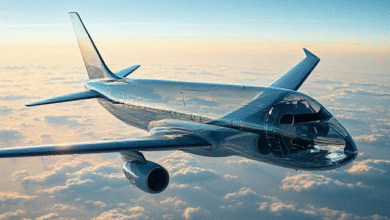Suzuki’s MoQBA: A Glimpse into the Future of All-Terrain Mobility


In a world where urban landscapes are becoming increasingly congested and environmental challenges are forcing innovation, the transportation sector is undergoing a transformation. Among the most exciting developments is Suzuki’s MoQBA (Mobility Quad Based Architecture), a futuristic mobility concept that may redefine how we think about off-road and urban transport. Designed to navigate rugged terrain, stairs, and uneven surfaces with ease, the MoQBA is a bold step forward for personal and commercial mobility.
What is Suzuki’s MoQBA?
Unveiled in 2023, Suzuki’s MoQBA is a quadruped-based robotic mobility platform designed to handle environments where traditional wheeled vehicles cannot operate efficiently. It combines four independently powered legs with hybrid mobility functionality—allowing it to both roll and walk.
This innovation was showcased as part of Suzuki’s R&D focus on next-generation personal mobility solutions, particularly targeting urban aging populations and post-disaster logistics.
Engineering Innovation and Design
The MoQBA uses a combination of robotic articulation and AI-based adaptive terrain sensing. It can roll on flat terrain using energy-efficient wheels and switch to legged locomotion when obstacles or uneven surfaces are detected. This dual-mobility system allows for unprecedented versatility.
The concept aligns closely with robotics research pioneered by companies like Boston Dynamics, but MoQBA is tailored for broader personal and public mobility use cases.
Advantages of the MoQBA
1. All-Terrain Navigation
MoQBA’s ability to switch between rolling and walking allows it to traverse stairs, snow, mud, and rubble, making it ideal for urban settings, mountainous regions, and emergency zones.
2. Inclusive Mobility
With populations aging rapidly, especially in Japan and Europe, the MoQBA could provide autonomous support for the elderly and disabled, helping them navigate complex environments.
3. Modular and Flexible Design
Suzuki has suggested the potential for interchangeable top units—such as seats for passengers, containers for cargo, or even medical kits—making MoQBA suitable for a wide range of services.
Future Implications
The MoQBA concept reflects a growing trend in multi-modal mobility, where vehicles are not confined to conventional paths. In smart cities, such platforms could integrate with public systems, autonomous delivery networks, or emergency response infrastructure.
In logistics, MoQBA-type devices could enable last-mile delivery in hard-to-access zones. For first responders, they could bring supplies or evacuation gear into disaster-hit areas faster and more safely than current vehicles.
Long-term, platforms like MoQBA may even contribute to space or planetary exploration, where rough, unpredictable terrain makes wheel-based movement inefficient.
Challenges Ahead
While the potential is significant, challenges remain. These include:
- Battery limitations for high-power robotic motion.
- Cost of manufacturing and deployment at scale.
- Public acceptance and trust in autonomous robotic systems.
- Cybersecurity concerns, especially if connected to networks or smart grids.
Nonetheless, with advances in AI, energy efficiency, and material sciences, these hurdles are steadily being addressed.
Conclusion
Suzuki’s MoQBA represents a bold step toward redefining transportation. By combining robotics, sustainability, and real-world mobility needs, it points toward a future where vehicles are not just tools for movement but intelligent partners in navigating a complex world.
Though still in the prototype phase, MoQBA captures the essence of what tomorrow’s transport systems may look like: adaptive, inclusive, efficient, and terrain-agnostic.
📌 Reference:
- Suzuki Global. (2023). Suzuki to Exhibit MO-Q at Japan Mobility Show 2023.
https://www.globalsuzuki.com - The Japan Times. (2023). Suzuki unveils four-legged robot MoQBA for urban and off-road mobility.
https://www.japantimes.co.jp - Nikkei Asia. (2023). Suzuki’s MoQBA aims to redefine terrain mobility for seniors and disaster zones.
https://asia.nikkei.com - Robotics Business Review. (2024). Legged Mobility Enters the Mainstream: From Labs to City Streets.
https://www.roboticsbusinessreview.com



